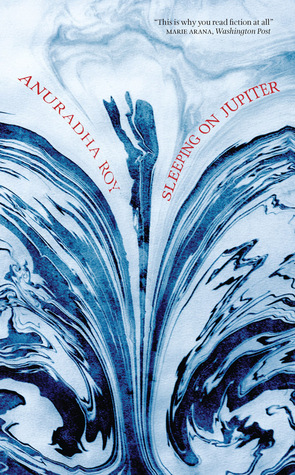
by
Anna Smaill
Many of the write ups about this book cite it as challenging, unusual, difficult to get into and as requiring perseverance to work into the storyline. Yes, those statements might be true and Winner it will not be but surely this has to be shortlisted for this year’s Booker Prize. It is on the Longlist and deservedly so, because it is a remarkable piece of writing.
In telling the story of a post apocalyptic world (London and Oxford) where memories have been destroyed, writing is long forbidden, in which communication is via music with all its chords, harmonies, rhythms, modulations, cadences and key changes are used to signify distance, direction, shape etc.
Simon has come to London where the population’s communal memory loss is enforced by means of the Carillon, an immense musical instrument which brainwashes everyone with its musical message beginning with “Matins” which tells the “OneStory” of the “AllBreaking”, the “dischord” that destroyed the past and created the present now, and ending the day with “Chimes” at “Vespers” when mental faculties are bombarded leaving the people with only their “bodymemory” to get them through sleep, and to wake again the next morning in a endless repetition and dying in a state of “chimesickness”. Simon carries with him a bag full of precious “objectmemories” which enable him to recall and fell calm about some moments in his life. Loss of these would mean total “memoryloss” and destitution.
Simon falls in with a group of young “pactrunners” (Lucien, Clare, Able and Brennan) who scour the leftovers of London’s underground networks of tunnels for nuggets of Palladium which they sell. The Palladium is used by “The Order” to build the Carillon. In this first half of the book the author needs to deftly find a way to tell us the story when the world is supposed to not use words and writing. How she does this is what makes the first part difficult for many readers – words are misspelt eg trompet, prentissed, poliss, others words are used just ever so slightly out of context and unexpectedly but continuously eg subito, presto, lento, and place names and slightly altered eg The Isle of Dogs becomes Dog Isle. All this gives you a sense of how over time what had been the English language had changed once writing disappeared and only sound communication survived on the street.
SPOILER ALERT But as with all dystopian states the disorder and chaos of the masses is controlled and the elite exist in a different place, in this case Oxford where the Order overseas the production of music and the “Orkestrum” of the Carillon’s calls. Also not surprisingly their has been a underbelly of resistance, “The Ravesguild” a network of “memorykeepers” to whom people brought memories for storing before they were completely lost. The Ravesguild is all but annihilated, and only the last memorykeeper, Mary, survives behind her mad-woman facade. It falls to Simon and Lucien to bring all the memories together in a new music piece which tells the true story behind the Allbreaking and to somehow play it through the Carillon to open up and birth a new dawn and free the people from their enforced collective amnesia.
Yes there are obvious similarities here to Philip Pullman’s His Dark Materials Trilogy, but for me that doesn’t distract from the work. The storyline held me all the way through. Whilst reading it I kept thinking that the real challenge for this book is to fund a film director and a musical score writer who would take up the challenge of composing the score in such a way that the different characters, the “bodymemories”, the mapping of the tunnels, tube lines, sewerage systems of London could all be made music. At one point in the book, Simon is being given the last memories held by Mary and each one of them tells a part of the story of what it is like to really be human – each with their own melody. I’m not knowledgeable enough about musical composition but I’d just love to see this done, with phrases to identify each of the characters, using rhythm for direction, key change for shape, modulations for direction etc. and then bringing them altogether in the final Carillon piece for full orchestra. The idea has tremendous potential. Potential also for a backstory/prequel about how The Order rose to power, how The Chimes first started, how the sickness spread, how the Ravensguild was inaugurated, founded and eventually fell.
I don’t expect this to be Longlisted, but I do hope t gets shortlisted to encourage a wider readership.
ashramblings verdict 4* An orchestral composition on the theme of memory, freedom, identity and the essence of humanity, love.
 Echoes from the Dead (The Öland Quartet #1)
Echoes from the Dead (The Öland Quartet #1) 





